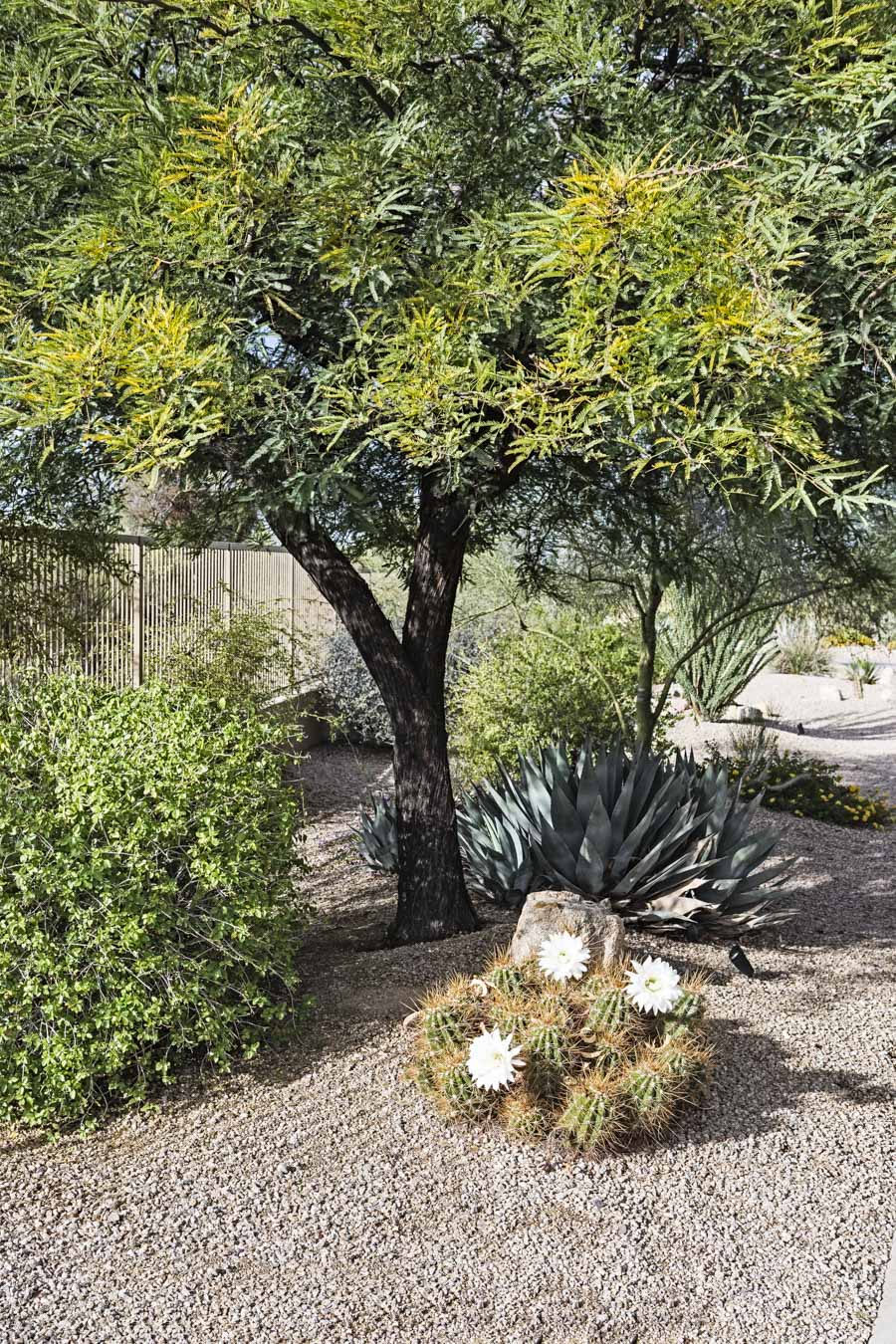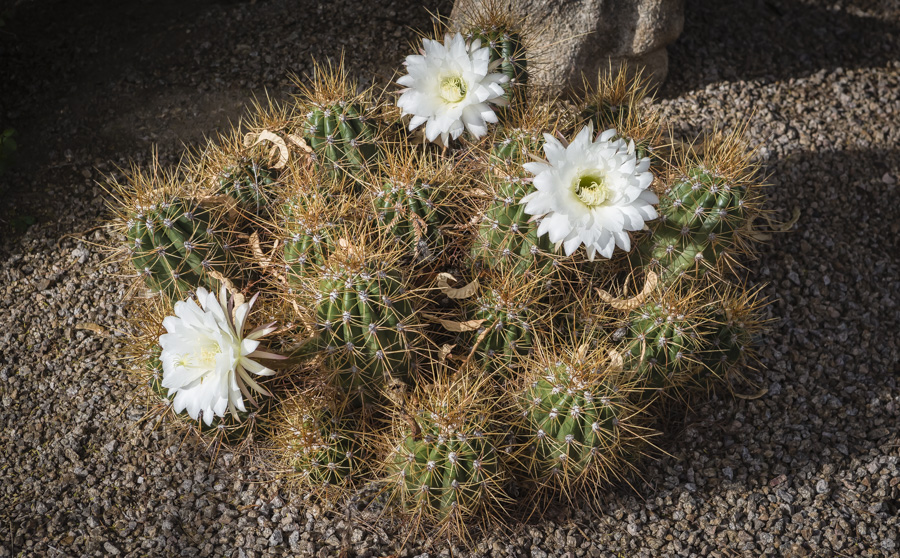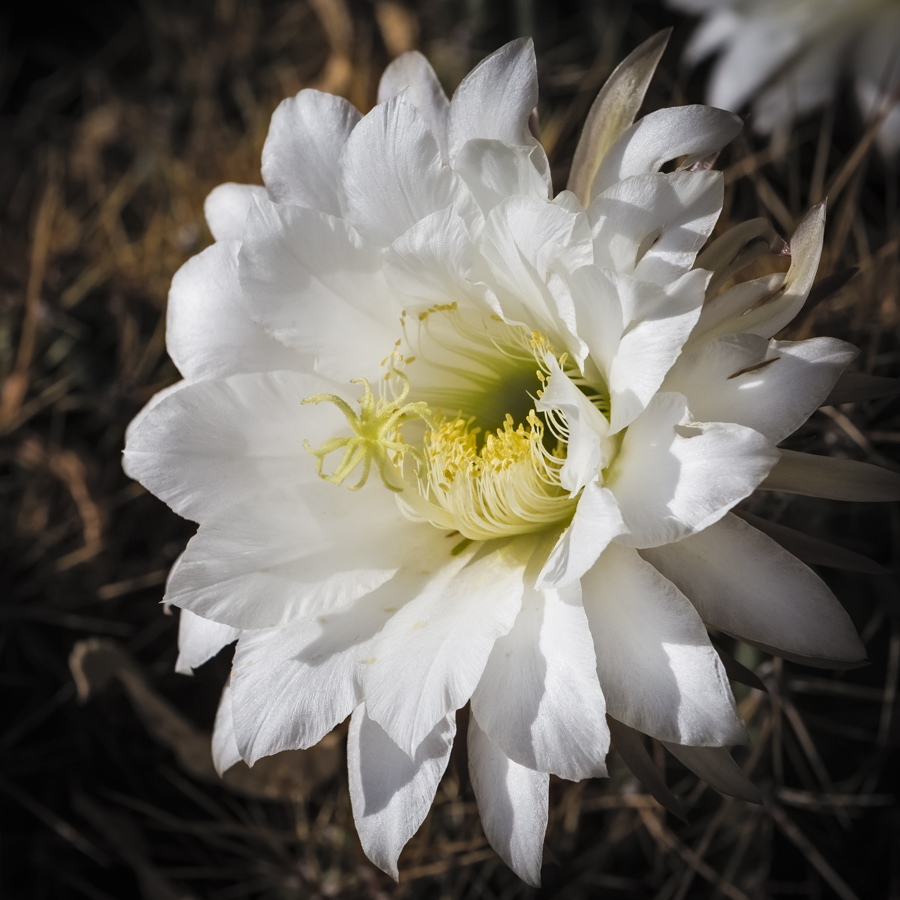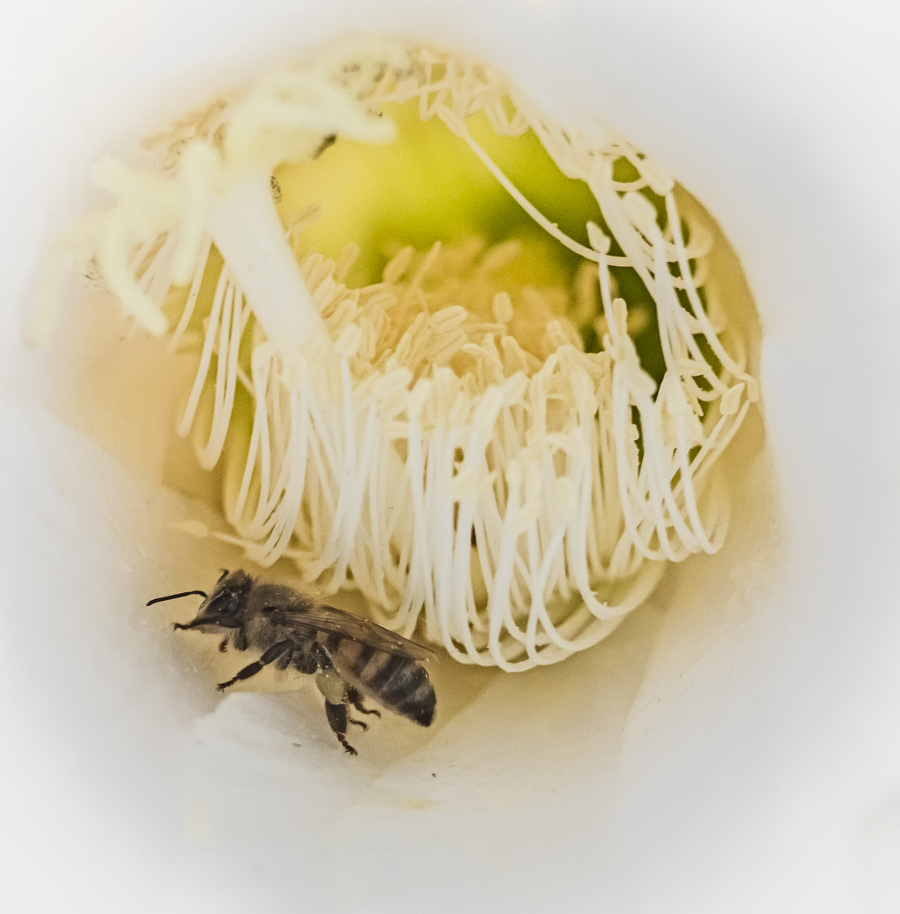Hedgehog is the a name of a family of cacti. We have a few on our property and much to our surprise, one of them flowered today. That’s the first time we’ve seen it flower in the three years we’ve been here. And, it’s autumn. The cacti usually flower in springtime. This species is known as Echinocereus, a genus of ribbed, usually small to medium-sized cylindrical cacti, comprising about 70 species from the southern United States and Mexico. The flowers come in all colours: today’s blooms were white, very similar in appearance to the Echinopsis cactus flowers I’ve displayed in previous posts.
Today’s photographs run in a sequence beginning with a wide angle and converging to a tight close-up of the flower. This first picture as taken from about 8 metres (25 ft) away and provides a sense of scale, relative to the tree and the fence. It’s an obvious picture to take, already composed for me, a nice arrangement of the plants around the tree. (Those landscapers seem to know something about composition!)

The next photograph features the cactus alone. The cylindrical barrels of the cactus are protected by a maze of very sharp spines, sharp enough to pierce the shoe of a photographer who got too close. Ouch! The flowers are about 20 cm (8″) in diameter. Their beauty is short-lived; their lifespan is about 24 hours.

Moving in even closer, this picture provides a much tighter view of the flower itself. Beautiful!

Today’s final picture is a macro shot, taken using an extension tube to move in much closer to the subject. That proximity to the subject dramatically reduces the depth of field, making it difficult to focus on the intended subject, particularly if that subject (the bee) is in constant motion. I persevered and was able to get this image of the bee busily collecting pollen before the flower closes up shop in a few short hours. You can see there isn’t much depth of field. The flower’s stigma (upper left) is well outside the field and quite blurry. The focus of the filaments and anthers (the spaghetti behind the bee) is diminished and is pretty much gone beyond that.
You can see the flower’s pollen (yellow dust) on the petals surrounding the centre of the flower. The bee collecting it is an Africanized honey bee, notorious for its aggressive nature. Had there been more than one, I wouldn’t have stayed long!

The photos were all taken using a 24-70 mm zoom lens, with an assist from a 21 mm extension tube for the last one. All pictures were taken hand held; it would have been helpful to use a tripod for the last one. Another lesson learned.

Carol really loves the flowers, and I agree! The bee shot is great as well!
Wow!!!! Beautiful!!!
Incredible contrast: delicate/ brutal!
What an nice surprise!
Wow – a catus blooming in the fall! Great images Peter. Your perserverance in capturing the Africanized honey be is admirable. I particularly liked your close up shoot of the flower. Enjoy your winter. Take care.
Nice sequence, Peter. My favourite is the 3rd – the close up of the flower. In this shot, presumably taken the same time of day as the others, the white flower is not at all ‘washed out’ by the bright sun. In fact, there is a nice pattern of shadows on the petals. In the first 2 shots, the harsh sun is having an effect. I have a shadowing device to counter this, but usually forget it at home!